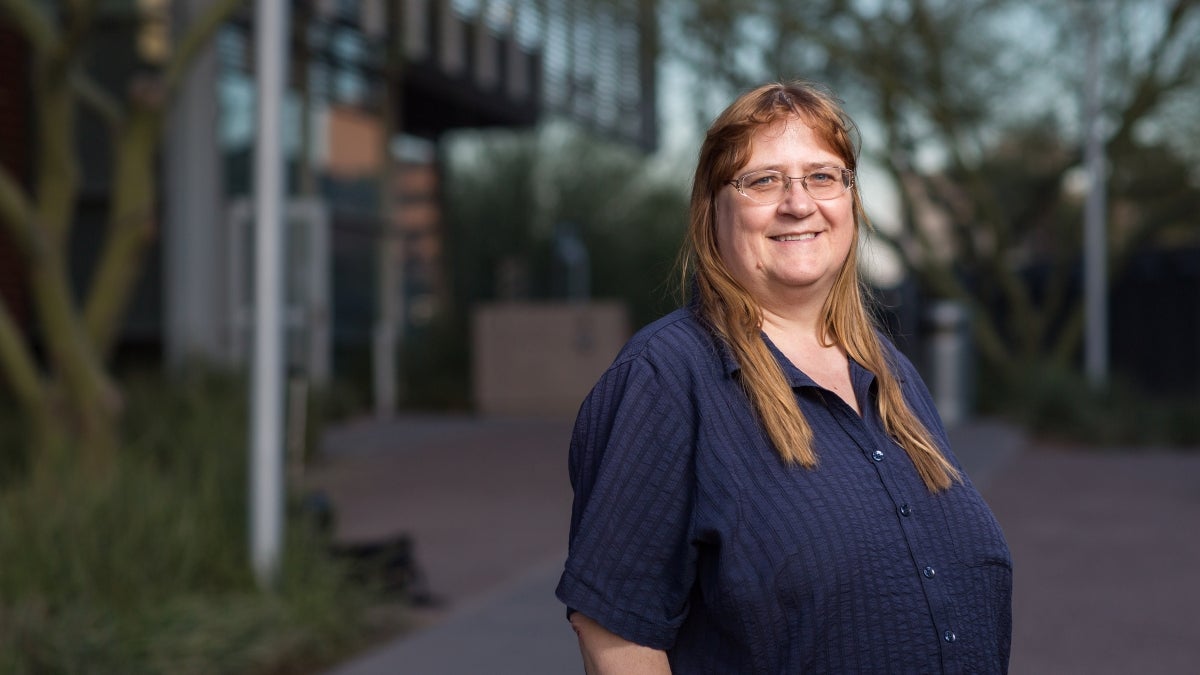When Petra Fromme was called into Arizona State University President Michael Crow’s office last year, the caller wouldn’t tell her assistant what the impromptu meeting was about.
“No, I don’t think I’m in trouble,” Fromme told her assistant.
Far from it: Fromme was being named a Regents’ Professor, the highest faculty honor. It’s a group of top tenured faculty who have made significant contributions to their field. With the most recent group — who will be inducted at a ceremony this Thursday in Tempe — ASU has a total of 83.
“They really surprised us,” said Fromme, a professor of chemistry and biochemistry in the School of Molecular SciencesThe School of Molecular Sciences is a unit of ASU's College of Liberal Arts and Sciences.. “None of us had any idea what it was about. ... I don’t know about the other two, but I was totally surprised. I was really happy about it, actually.”
Fromme, a world expert on proteins, has been a pioneer in using new technology to research their molecular structure. As director of the new Center for Applied Structural Discovery at the Biodesign Institute, she leads 12 faculty and their students from different disciplines studying the structure and dynamics of proteins, potentially leading to improved manmade technologies.
“Petra uses the state of the art in X-ray laser technology to explore the structural and dynamical features of biological molecules to understand how they work,” said Dan Buttry, professor and director of the School of Molecular Sciences. “The results will impact fields as diverse as solar energy and human health.”
Fromme’s discoveries and innovative research methods, which incorporate physics and engineering, will potentially lead to new drugs to fight deadly diseases and new methods of creating clean energy.
She feels her appointment as Regents’ Professor will boost the center’s profile.
“I think it will increase the visibility of the center and attract students who would otherwise do their Ph.D. at Harvard or Yale,” she said.
In 2002, when she came to ASU, Fromme had two counter-offers from Germany. One was for the chair of the biophysics department at a prestigious Berlin university and an identical job at a medical school in Münster.
“I turned them both down at this time to come as a normal full professor to ASU,” Fromme said. “All of my colleagues in Germany — most of them, anyway — they said, ‘You do what?? You turn down the offer to become chair of the biophysics department at Humboldt-Universität in Berlin to go to where? Arizona State University in the middle of the desert?’”
The Münster medical school called Fromme a year and a half after she had been at ASU. They had kept the job open for her.
“They hoped I would not like it here and come back and take the position,” she said. “They were very disappointed when I said no, I like it here and I want to stay here.”
ASU’s collegial atmosphere lured Fromme.
“I saw how nicely the people here worked together,” she said. “This actually attracted me to ASU. They had all these independent groups coming from very different backgrounds but working on big things together. This was even before Biodesign was founded. ASU was really great about interdisciplinary science and out-of-the-box thinking.
“In Germany every professor is king in his own ivory tower. They have much bigger groups than they have here, so they have their own empire. They normally collaborate with their colleagues all over the world but not with their colleagues next door, because this is their worst enemy, because they compete for resources. There is never this ‘we’ feeling. … Here the department practically stands in complete unity.”
Her wish list for her future at ASU includes the proposed Biodesign C building, with a compact free electron laser in the basement to peer at molecules.
“We are trying to determine the structure and the function of the building blocks of life,” Fromme said.
If scientists know how molecular structures function at the microscopic level, they can change, tweak or design new functions that could possibly lead to new drugs that work with proteins within the cells to fight cancer and infectious disease.
Part of Fromme’s research involves how plants can adapt to all types of environments, from deserts and hot springs to volcanic lakes and oceans, and how they all conduct photosynthesis in those different environments.
“The big goal is to unravel how plants with visible light split water into oxygen protons and electrons, thereby driving photosynthesis,” Fromme said. “If we could make a system which would be as good as a natural system, but as stable as a man-made system, that would be marvelous.”
More Science and technology

ASU postdoctoral researcher leads initiative to support graduate student mental health
Olivia Davis had firsthand experience with anxiety and OCD before she entered grad school. Then, during the pandemic and as a result of the growing pressures of the graduate school environment, she…

ASU graduate student researching interplay between family dynamics, ADHD
The symptoms of attention deficit hyperactivity disorder (ADHD) — which include daydreaming, making careless mistakes or taking risks, having a hard time resisting temptation, difficulty getting…

Will this antibiotic work? ASU scientists develop rapid bacterial tests
Bacteria multiply at an astonishing rate, sometimes doubling in number in under four minutes. Imagine a doctor faced with a patient showing severe signs of infection. As they sift through test…
